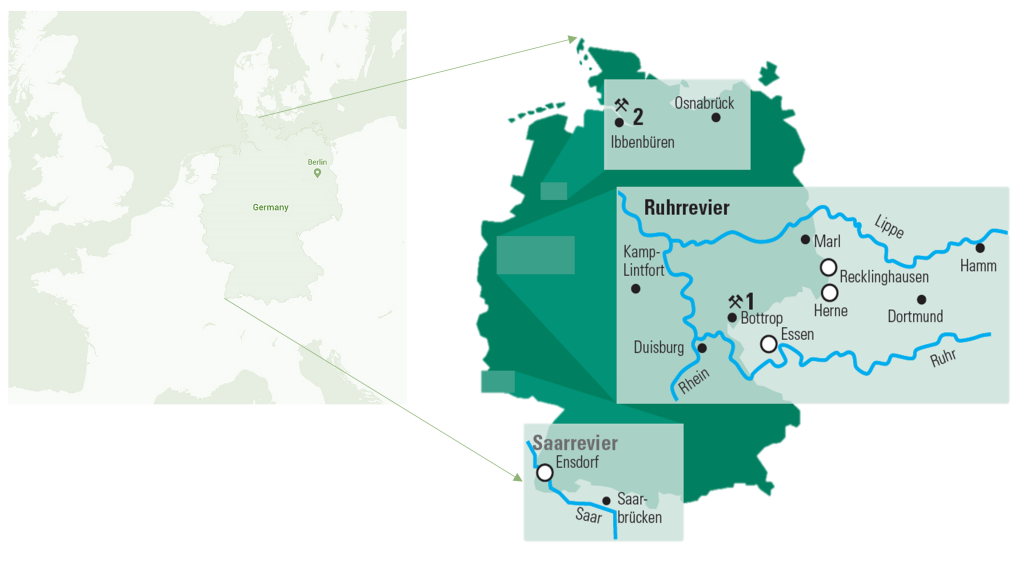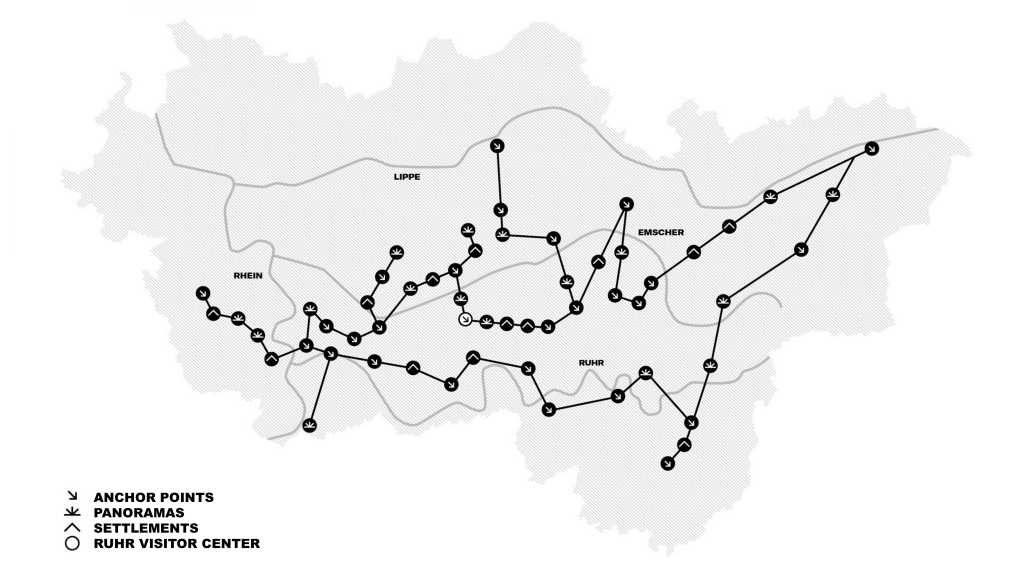Introduction
In a coal phase-out era, Germany has put efforts on to create frameworks that combine state support, progressive region development and environmental awareness. Lignite-fired power plants and lignite opencast mines in Germany are primarily clustered in the Rhineland, Lusatian, and Central German coal regions, some of them still active today. In contrast, hard coal-fired power plants are distributed more evenly throughout the country, with a significant concentration in the Federal States of the former Western Germany. Remaining hard coal mine operations were shutdown completly in December 2018.
Closure of coal mines
Hard-coal mine closures and post-mining activities have followed a roughly regular path, with RAG Foundation and its affiliates being the primarily responsible for proper closure and management of perpetual tasks. Each of the three main hard-coal mining (Ruhr, Saar and Ibbenbüren) areas in West Germany (Fig. 1) have developed different measures and different structural changes due to the intrinsic conditions of each and the number of mine sites. Therefore the history, time-evolution, policies and plans executed for each area might differ.

The structural politics began to change in the late 1980s where ecological aspects were integrated for the first time. Additionally, the importance of new technologies and the transfer of those into the economy was emphasized in order to facilitate the founding of new industrial companies and to create jobs in other industrial sectors. In the early 2000’s Infrastructure in education and transportation were made out to be key factors in the structural transformation of the Ruhr Region.
The Ruhr Region
Integrating new sustainable and economically viable standards for the transition goals in the coal mining German regions has been a complex and multifaceted process. The history and industrial powerhouse of the Ruhr Region has impulse the integration of coal mining heritage as a key fundamental factor for transitioning away from mining and heavy industry based economy toward a more sustainable and diversified economy. The regional association Ruhr is coordinating the collaboration and is offering exchange platforms for the town councils. Since 1920, the Regionalverband Ruhr (RVR) has been supporting the development of the Ruhr area from a state in the midst of an unregulated industrial boom to a modern industrial location with quality of life. Consequently, the RVR has been shaping the transformation of the Ruhr area, today former sites of the steel and mining industries have become locations for new companies, cultural events and leisure experiences (RVR, 2023).
The Industrial Heritage Trail
The Industrial Heritage Trail (in German “Route der Industriekultur”) (Fig. 2), part of the European Route of Industrial Heritage, is one of the transformation strategies for the region, linking tourist attractions related to the industrial heritage in the Ruhr area in Germany (central in Fig.1).

Over a distance of 400 kilometers the tourist themed route connects the most important and tourist-attractive industrial monuments in the Ruhr area. The “Route” consists of a network of industrial heritage sites and themed routes that allows visualizing the history of coal mining, steel production, and industrialization in the Ruhr Area. The route network provide visitors with a unique heritage of the Ruhr metropolis to explore, including the Ruhr area’s only UNESCO World Heritage Site, Zollverein in Essen, and 27 anchor points, locations with particular historical significance and tourist appeal. In addition, 17 viewpoints, 13 settlements and numerous themed routes are part of the Industrial Heritage route. These sites include former coal mines, steel mills, museums, and other industrial landmarks, and they are connected by a system of signage and information to create a comprehensive experience for visitors interested in the region’s industrial history.
